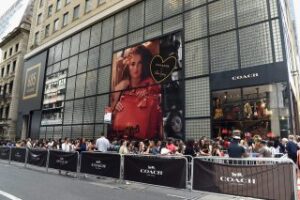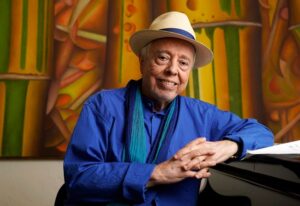A New York oasis lies in path of city’s push to build housing

By Liya Cui
NEW YORK (Reuters) – A beloved public garden in lower Manhattan may soon become a casualty of New York’s push to develop more housing despite opposition led by celebrities such as Robert De Niro and Martin Scorsese.
Elizabeth Street Garden, built by an antiques gallery owner on land leased from the city in 1991, is an urban oasis in the densely crowded Little Italy neighborhood, the backdrop for “Mean Streets,” Scorsese’s classic New York movie starring De Niro.
In 2013, the city proposed a 123-unit affordable housing project for seniors on the one-acre (0.4 hectare) plot. Opponents have proposed alternative sites nearby that could create 700 units, but housing officials remain unconvinced. Legal options are running out to stop the garden’s eviction after the lease expires on Sept. 10.
Thousands of people, including Scorsese, De Niro and another downtown luminary, poet and musician Patti Smith, have written letters asking Mayor Eric Adams to preserve the garden.
“I support increasing the availability of affordable housing,” wrote De Niro, “but I’m also passionate about preserving the character of our neighborhoods.”
The controversy is just one example of the tensions that have surfaced as New York strives to build more homes in one of the country’s most populous and expensive housing markets.
Its vacancy rate dropped to 1.4% in February, the lowest since 1968, according to the city’s Department of Housing Preservation and Development.
Adams has made building more housing a priority for his administration. In August, he ordered agencies to review all city-owned property for potential development, part of a goal he set in 2022 to build 500,000 new homes by 2032.
Since 2016, the city has required 20-30% of new housing developments to be affordable, meaning residents earning an average of 40-80% of the area median income can buy the units.
However, the nonprofit that runs Elizabeth Street Garden noted that the site’s affordability requirement ends after 60 years.
Gentrification is at the heart of the opposition to another contentious plan: One45 Towers, a massive $700 million high-rise complex in Harlem.
‘CITY OF YES’
In 2022, Adams unveiled a three-pronged plan called City of Yes to update zoning regulations for new development. The final portion, which the city council is expected to vote on this year, is designed to “build a little more housing in every neighborhood,” said Adams. This includes converting underused office buildings and allowing apartments above businesses in low-density commercial areas.
Much of the opposition has come from low-density neighborhoods in New York’s boroughs outside of Manhattan.
“I think it’s fear – fear of change,” said Queens Borough President Donovan Richards, who provided conditional support for City of Yes last week. Only in Staten Island, the most suburban of the five boroughs, did the borough president issue an unfavorable recommendation.
Critics fear zoning changes will overcrowd their neighborhoods, making them like Manhattan.
One controversial aspect allows homeowners to convert basements, garages and backyard cottages into rental apartments. Another proposal would eliminate mandates to provide parking for new development, angering residents of car-dependent areas.
Richards called City of Yes a modest proposal that would not significantly alter low-density neighborhoods, but acknowledged the need for more affordable housing and parking in areas with little public transit.
Paul Graziano, an urban planner who lives on a suburban block in Queens, called City of Yes “apocalyptic.” The plan’s ultimate goal, he said, is to transform areas with mostly owner-occupied single-family homes into neighborhoods dominated by market-rate or luxury apartments.
“If you build it, they will come, right?” said Graziano. “If you enable it, it’s going to happen. This is what happens in the city of New York.”

Quality of life is the bottom line for many in New York City, where low-density neighborhoods feel increasingly squeezed, as in Queens, or where green spaces are especially rare, as in lower Manhattan.
“There’s nothing like Elizabeth Street Garden in the city, and the city will never build anything like it again,” said Joseph Reiver, who took over the space from his late father. “They’re never going to tear down buildings to build gardens.”








